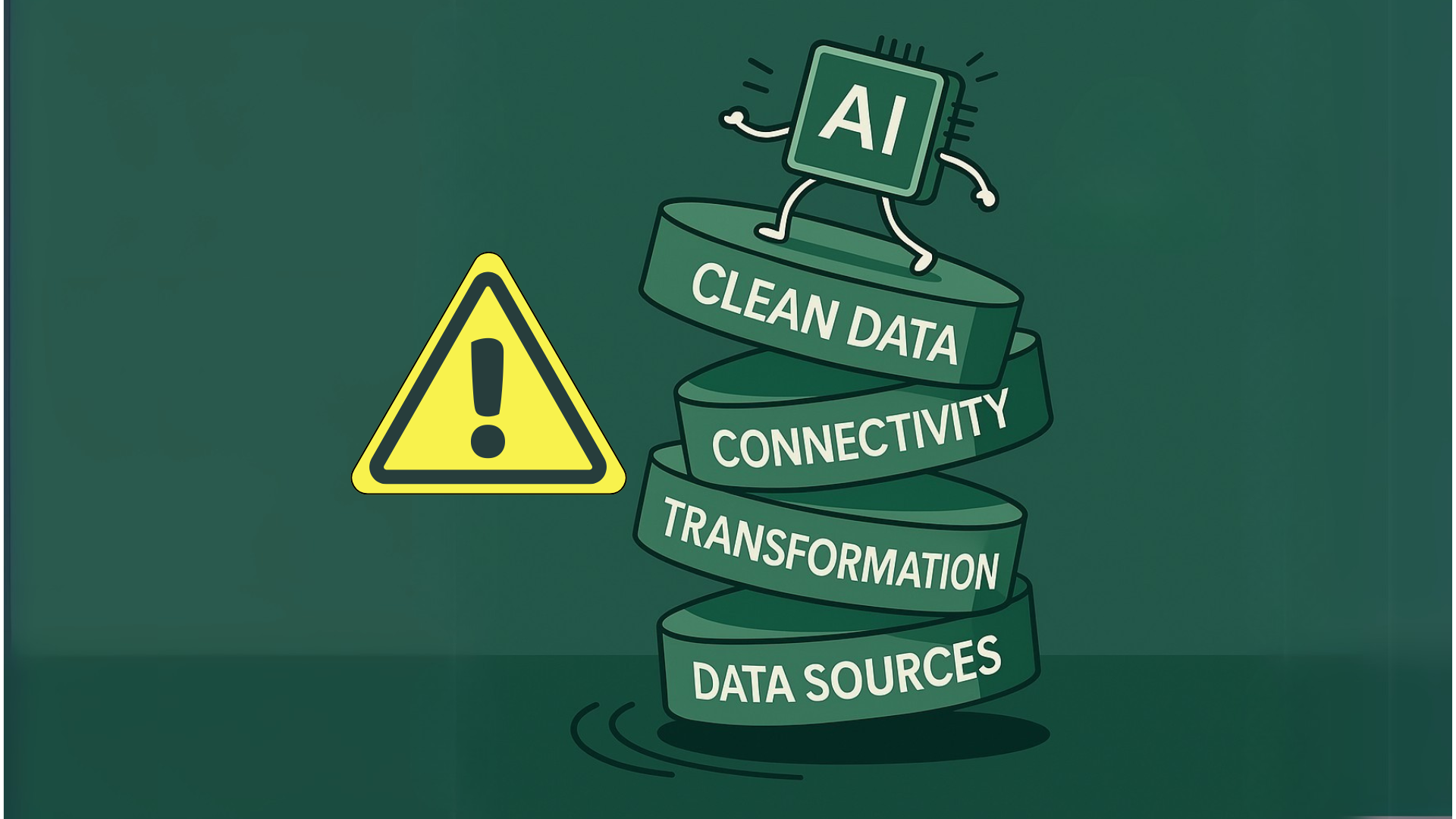The Dashboard That Eats Your Week (Every Week)
Without a modern data stack, your dashboards devour time, sanity, and sleep.

There’s no shortage of AI tools promising to transform your business. Smart workflows, agentic assistants, instant insights—they all sound great. And for content, image generation, or productivity hacks, they often deliver.
But when it comes to your actual business data—sales numbers, customer behavior, financial metrics—those same tools fall flat without a solid foundation. Behind the scenes, most teams are still buried in spreadsheets, manual reports, and dashboards that can’t keep up.
We’ve seen this gap firsthand. Businesses want to move faster, automate more, and make smarter decisions. But without a modern data stack, AI just adds noise. This isn’t a nice-to-have—it’s the system that makes everything else work.
Every growing team starts here: spreadsheets, a few charts, maybe a dashboard or two. It’s fast. It’s flexible. It feels like you’re moving in the right direction. And for a while, you are.
But then things shift.
Data starts living in too many places. Reports stop matching. Teams create “just one more” tab, and suddenly no one’s sure which numbers are right. You’re spending hours cleaning data instead of analyzing it.
Here’s what we see over and over:
By the time these issues show up in revenue, it’s already costing you speed, clarity, and confidence. That’s when teams realize: it’s not about making better reports. It’s about building a better system.
When teams hit a wall with reports and dashboards, the instinct is to fix what's visible—clean up the visuals, add filters, buy a new BI tool. But the issue isn’t what you see. It’s what sits underneath.
A real data stack shifts the focus from presentation to infrastructure. Instead of exporting, cleaning, and visualizing in a loop, you centralize your data, automate how it flows, and build on something solid.
What that actually looks like:
This isn’t theory. It’s the difference between a team that spends Mondays fixing broken reports and one that spends Mondays making decisions.
We’ve seen what happens when teams move beyond spreadsheets and scattered tools. With a real data stack in place, the impact shows up quickly—across operations, customer experience, and bottom-line performance.
These aren’t outliers—they’re patterns. Research shows that data-mature SMBs see stronger marketing outcomes, higher customer satisfaction, and better decision-making across the board. (Source: Dataversity)
And in an AI-saturated market, the difference gets bigger. Companies with solid data foundations are twice as likely to adopt AI effectively—not for gimmicks, but for real improvements in forecasting, automation, and operational clarity. (Source: AWS)
The tools are evolving fast. But the teams winning today aren’t chasing headlines. They’re building the stack that lets them move faster with more confidence—week after week.
Data maturity used to be an enterprise concern. That’s no longer true. Small and mid-sized businesses are moving fast, and the ones building real data infrastructure are pulling ahead.
Recent research shows 75% of growing SMBs are increasing their investment in data and AI this year. (Source: SMB Group) But it’s not about buzzwords—it’s about results. The companies investing in data aren’t just planning better. They’re operating better. They catch problems sooner. They adapt faster. They stop guessing.
Meanwhile, teams still running on spreadsheets and scattered reports are hitting friction:
The difference isn’t size. It’s systems.
And as the tech keeps evolving—especially around automation and AI—that difference compounds. Organizations with clean, connected data will be able to act on these new tools. Others will be stuck cleaning up CSVs.
If this all sounds familiar—or if you're already feeling the limits of your current setup—it might be time for a quick systems check.
We’re offering a free Data Stack Maturity Assessment—a lightweight version of the framework we’ve used in consulting to quickly pinpoint where teams are blocked and what to prioritize.
It includes a short call, a tailored scorecard, and practical next steps.
🕐 It’s free for now while we test and refine the process—but spots are limited.
We’re offering these one-on-one while we refine the quiz. Book your spot now.
Dashboards are fine. Reports have their place. But if your team is serious about scaling, you need more than one-off insights—you need infrastructure.
The good news? Getting there doesn’t have to be hard. You don’t need to rip and replace. You don’t need a full-time data team. What you need is a practical way to bring your data together, keep it clean, and make it useful.
That’s where we focus.
A proper data stack doesn’t just help you understand the past. It helps you move faster, align teams, and prepare for what’s next.
And in a time when everyone’s chasing the next AI headline, the teams who win will be the ones who’ve done the quiet work underneath—built to scale, built to adapt.

Without a modern data stack, your dashboards devour time, sanity, and sleep.

Spreadsheets: Versatile, Familiar—But Costly at Scale Spreadsheets are the duct tape of modern business. They're flexible, familiar—and dangerously...